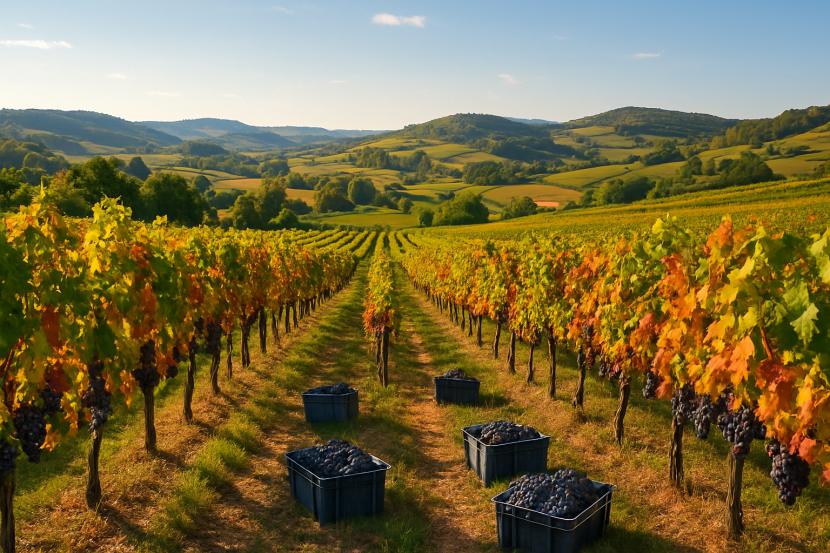Published on
September 22, 2025
Wine tourism is becoming an increasingly popular travel trend, particularly among younger generations. As wine regions across Europe continue to attract attention, tourism boards and wine producers are capitalizing on this growing interest by enhancing visitor experiences and offering immersive cultural activities. The rise of wine tourism is shaping the travel landscape, as wine lovers seek new destinations to explore both for the quality of the wines and the unique local experiences they provide.
France: Leading the Wine Tourism Charge
France remains the top destination for wine tourism in Europe, scoring an impressive 85.2 out of 100 on the Wine Tourism Index. Known for its vast wine-producing regions and prestigious wine varieties, France has long been the go-to destination for wine enthusiasts. Famous wine regions such as Champagne, Burgundy, and Bordeaux continue to lead the way in attracting tourists with their unique offerings.
In Champagne, travelers can explore UNESCO-listed cellars, where sparkling wines have been crafted for centuries. In Burgundy, visitors can experience the scenic beauty of the region’s unique vineyard plots, known as “Climats,” where the terroir influences the flavors of the wine. Bordeaux offers travelers the opportunity to visit historic châteaux while enjoying some of the world’s finest wines. These regions not only boast rich winemaking traditions but also continue to innovate, blending history with modern techniques to ensure an unforgettable wine tourism experience.
Italy and Spain: Key Competitors in Wine Tourism
Italy follows closely behind France in the rankings, with its rich heritage and wide variety of wines. Tuscany, known for its iconic Chianti hills, is one of Italy’s most beloved wine destinations, attracting tourists with its charming villages and scenic vineyards. Piedmont, with its renowned Barolo wines, and Puglia, famous for bold red wines, also contribute to Italy’s status as a powerhouse in wine tourism. Italian wine regions offer visitors a combination of local traditions, unique grape varieties, and culinary delights, making it a top choice for wine lovers.
Spain ranks third, with its vast vineyard areas and diverse wine offerings. With over 900,000 hectares of vineyards, Spain is home to a rich variety of wine styles, from the famous Rioja to the bold reds of Ribera del Duero. Spain also stands out for its sherry wines from Andalusia and the volcanic wines from Lanzarote. The country’s varied landscapes, coupled with its long wine-producing history, create a unique blend of wine tourism experiences that cater to a range of tastes and preferences.
Emerging Wine Regions: Portugal, Greece, and Beyond
While France, Italy, and Spain continue to dominate, other emerging regions in Europe are gaining recognition for their wine tourism potential. Portugal and Greece are increasingly attracting visitors with their distinct wine cultures. Portugal, with its renowned Port wines and vibrant wine regions such as Douro Valley, offers a unique and rich wine tourism experience. Greece, known for its indigenous grape varieties, combines ancient winemaking traditions with breathtaking landscapes, making it an appealing destination for wine lovers.
Germany, Hungary, Romania, Austria, and Bulgaria are also emerging as new highlights on Europe’s wine tourism map. These countries are beginning to gain recognition for their growing wine industries, and as they continue to develop their wine tourism offerings, they are becoming more attractive to travelers seeking something new and off the beaten path.
The Impact of Wine Tourism on European Travel
The rise of wine tourism is not just a trend among wine enthusiasts; it is contributing to the overall growth of tourism in Europe. As travelers flock to these wine regions, they are not only enjoying the wines but also immersing themselves in the local culture and cuisine. This trend is encouraging the development of vineyard tours, wine tastings, harvest festivals, and other cultural experiences designed to attract visitors and enhance their overall travel experience.
Local economies are benefiting greatly from wine tourism, as visitors spend on wine-related activities, accommodations, and food experiences. The rise of younger travelers interested in cultural and sensory experiences is also transforming the way these regions approach tourism, with a greater focus on sustainable practices and unique, authentic offerings.
The Future of Wine Tourism
The future of wine tourism in Europe looks bright as younger generations continue to prioritize immersive travel experiences that combine culture, history, and gastronomy. As wine regions evolve and introduce new ways to engage visitors, Europe will remain a top destination for those seeking the perfect blend of scenic beauty and world-class wine. The continued growth of wine tourism offers exciting opportunities for both travelers and local communities, making it a key aspect of Europe’s broader tourism industry.
